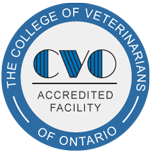Illustrated Articles
-
Pointers are warm, loving dogs capable of giving members of their family great affection. They are usually overflowing with nervous energy and ready to hunt at the drop of a leash.
-
The shaggy Polish Lowland Sheepdog may look like an overgrown stuffed animal, but he is a serious worker who needs a job to be fulfilled. Active people who can include a dog in their everyday adventures find the PON - that is short for Polski Owczarek Nizinny, the name of the breed throughout most of the world - is an energetic and fun-loving companion.
-
The Pom may be tiny, but this spunky extrovert can get a little cocky for a dog not much bigger than your shoe. Outgoing and effervescent, Pomeranians have faces like little foxes, making them hard to resist and easy to forgive.
-
While Poodles are often portrayed as snobby and aloof, in reality, they are friendly, cheerful dogs with a keen sense of fun.
-
Pequenos are the smallest of the three Portuguese Podengos. They love to run and play and appear to enjoy being silly.
-
Portuguese Water Dogs are intelligent and used to deciding for themselves if something is not right. The positive aspect of this behavior is that they are wonderful companions, take good care of the children in their families, and feel at home in the city, the country, or at the beach.
-
Special care must be taken when your dog comes home after an operation to ensure the incision area stays clean and dry and heals properly. Some signs are cause for concern, and if observed, call your veterinarian right away.
-
Preanesthetic bloodwork is an important step in the evaluation of pets undergoing anesthesia or surgical procedures. Bloodwork can help diagnose a variety of internal disorders, many of which could negatively affect your pet's anesthetic and surgical safety. By diagnosing and treating any underlying medical disorders before surgery/anesthesia, your veterinarian can make anesthesia as safe as possible for your pet.
-
Next to you, the second most important person in a dog’s life is your veterinarian. Before actually going to the veterinary hospital, take practice car rides and be sure to properly restrain your dog in the car by placing him in a crate or harness. The very first visit to your veterinary clinic should be a fun introduction to a new place. When the actual appointment occurs, your dog will be checked in by the receptionist and the technician will gather vital information. Your veterinarian will then perform a comprehensive physical examination and give recommendations that are best for your dog.
-
Telemedicine is the act of practicing medicine from a distance and your appointment will be conducted by a licensed veterinarian. Before your appointment, gather information on your pet’s history and your current concern. Look at a calendar and write down a timeline of your pet’s problems. Be prepared to answer questions that you would normally be asked at an in-person appointment. Write notes to help you remember everything. Most telemedicine appointments involve the use of some type of video chat. Conduct your visit in a quiet area with good lighting and have your pet with you before the call starts. Not all concerns can be addressed through telemedicine. If your veterinarian is unable to arrive at a diagnosis via telemedicine, he or she can help you determine the next step for your pet to ensure that he or she receives optimal care.


